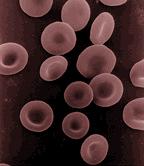Discoveries relating to immunity
 Experiments in guinea-pigs showed that, unlike with previous sera, cholera immuno-serum did not affect bacterial toxins, but provided immunity by preventing the bacteria from moving and growing. This was termed bacteriolytic immunity. As with anti-toxic immunity, animals could gain immunity through injection with the blood of an immunised animal.
Experiments in guinea-pigs showed that, unlike with previous sera, cholera immuno-serum did not affect bacterial toxins, but provided immunity by preventing the bacteria from moving and growing. This was termed bacteriolytic immunity. As with anti-toxic immunity, animals could gain immunity through injection with the blood of an immunised animal.
Bordet showed that cholera immuno-serum had bacteriolytic properties in a test tube, but only when fresh, and that they were lost if the serum was heated. However, the lost bacteriolytic activity could be restored when it was combined with fresh serum from a normal, non-immunized, animal. Bordet explained that the bacteriolytic immunity depended on two components which acted together against the cholera bacteria. The first was the heat-stable antibody for cholera. The other, heat-sensitive component, found in the blood of normal animals, is known as ‘complement’. When the bacteria, the antibody and complement combine, the complement is ‘fixed’ in the reaction and disappears from the mixture. This property formed the basis of a reaction to diagnose syphilis, and allowed the development of other diagnostic tests for disease.
Through injecting guinea-pigs with rabbit blood, Bordet showed that specific antibodies formed to match the rabbit blood cells. The discovery of antibodies to red blood cells provided a new way of studying the immune system which was easier to control and measure than studying bacteria, and paved the way for further discoveries in immunology.
Last edited: 5 November 2014 13:33
